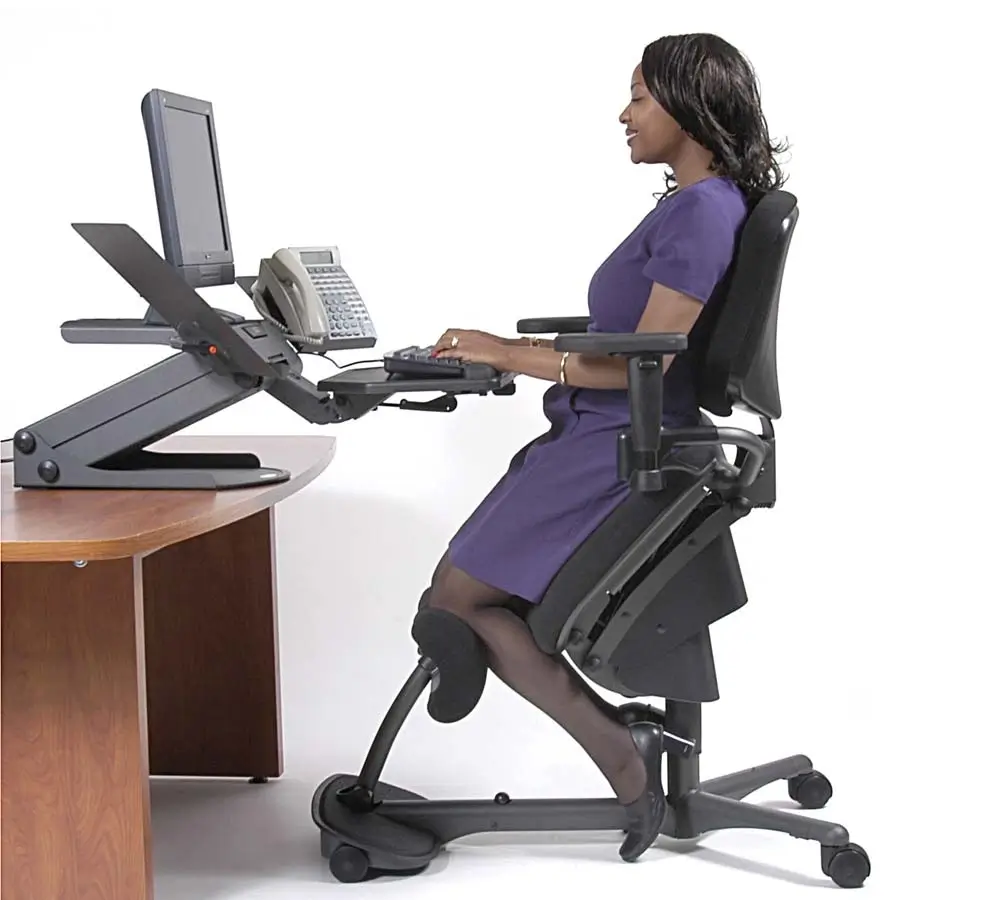Office ergonomics is the science of designing your workspace to fit your body, so you can work comfortably, stay healthy, and avoid strain or injury. It’s not just about fancy chairs or standing desks—it’s about creating a setup that supports your posture, movement, and focus throughout the workday.
Whether you’re working from home or in a corporate office, the right ergonomic setup can prevent common issues like:
-
Lower back pain
-
Neck stiffness
-
Eye strain
-
Repetitive stress injuries (like carpal tunnel syndrome)
Why Ergonomics Matters More Than Ever
In today’s world, millions of people spend 6–10 hours per day seated in front of a screen. Poor posture, bad habits, and ill-fitting furniture silently take a toll on your body over time.
Real Consequences of Poor Ergonomics
-
Chronic pain and discomfort
-
Reduced productivity
-
Long-term musculoskeletal disorders
-
Increased risk of sick leave or burnout
A few simple adjustments can make a world of difference in your comfort, focus, and overall health.
Key Principles of an Ergonomic Workspace
Let’s walk through how to optimize your office setup from head to toe.
1. The Right Chair Matters
A good chair supports your natural spine shape. Here’s what to look for:
-
Adjustable seat height (your feet should rest flat on the floor)
-
Lumbar support for your lower back
-
Adjustable armrests that support your elbows comfortably
-
A seat depth that doesn’t compress the back of your knees
Tip: Sit all the way back in your chair and adjust the backrest so that it supports the curve of your lower back.
2. Monitor Placement: Keep It at Eye Level
Your monitor should be:
-
At eye level (top of the screen at or just below eye height)
-
Arm’s length away from your face
-
Tilted slightly upward, not downward
Tip: Use a monitor riser or stack of books if your screen is too low.
3. Keyboard and Mouse Setup
Keep your arms relaxed with elbows at a 90-degree angle.
-
Your keyboard should be flat and close to your body
-
Your wrists should be neutral, not bent
-
Use a mouse that fits your hand comfortably
Tip: Consider a keyboard tray or ergonomic mouse if you work long hours.
4. Protect Your Eyes from Strain
Staring at a screen all day? Try the 20-20-20 rule:
Every 20 minutes, look at something 20 feet away for 20 seconds.
Also:
-
Reduce screen glare with blinds or anti-glare filters
-
Use proper lighting—no overhead lights directly above your monitor
5. Movement Is Non-Negotiable
Ergonomics isn’t just about your furniture. It’s about how often you move.
Every 30 minutes, stand up, stretch, or walk around for at least 2–3 minutes.
Great desk stretches include:
-
Neck rolls
-
Shoulder shrugs
-
Seated spinal twists
-
Standing hamstring stretches
Real-World Ergonomic Challenges and Solutions
Working from Home?
Many remote workers use kitchen chairs and dining tables. Try this:
-
Use cushions or towels for back support
-
Stack books to raise your laptop height
-
Use an external keyboard/mouse if possible
Using a Standing Desk?
Alternate between sitting and standing. Use a footrest and an anti-fatigue mat. Avoid locking your knees when standing.
Ergonomics and Mental Well-being
Comfortable workspaces also reduce stress and improve focus. When your body isn’t aching, your mind works better.
Poor ergonomics can contribute to fatigue, frustration, and even mental burnout.
When to Seek Professional Help
If you’re experiencing ongoing discomfort, pain, or numbness while working:
-
Speak with your employer’s Health and Safety team
-
Request an ergonomic assessment
-
Consider consulting a physical therapist or occupational health specialist
A Quick Ergonomic Checklist
✅ Chair with lumbar support
✅ Feet flat on the floor
✅ Monitor at eye level
✅ Wrists in neutral position
✅ Elbows at 90 degrees
✅ Frequent movement breaks
✅ No screen glare
✅ Relaxed neck and shoulders
Final Thoughts: Ergonomics Is an Investment in Your Health
You don’t need to overhaul your entire office overnight. Small, thoughtful changes can dramatically improve your daily comfort, reduce injury risks, and make your workdays more productive.
Your Comfort Is Non-Negotiable
If you’re uncomfortable, speak up. Advocate for an ergonomic assessment or invest in tools that help you work pain-free. Your body will thank you, now and years from now.
Frequently Asked Questions
What are the common symptoms of poor ergonomics?
Back pain, neck strain, tingling in the hands or wrists, frequent headaches, and eye fatigue.
Can I make my home office ergonomic on a budget?
Yes. Use household items (books, pillows) for adjustments, and focus on posture and movement.
How often should I take breaks?
Every 30–45 minutes. Even 1–2 minutes of movement can help.
Sources
Related Posts
5 Top Office Safety Topics For Office Workers
11 Valid Ergonomics Principles For Preventing MSD In The Workplace
What is Lighting Ergonomics: How it Affects You
How to Carry out DSE Assessment: Important Areas to Consider

